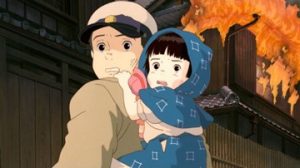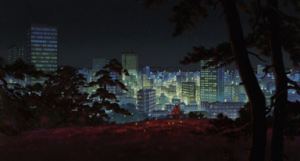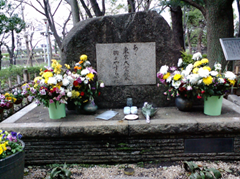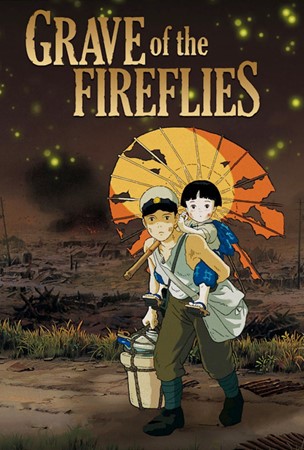Preface
I would like to preface this piece with a confession: I do not write media reviews. I will discuss books, films, and TV shows at length with anyone willing to lend me an ear, but I often cannot remember enough to write a meaningful review. That said, last night I sat down to watch the classic Ghibli film Grave of the Fireflies at the recommendation of a friend, and the sheer power of that film compels me to write this piece.
I also have a second confession: I do not watch Japanese anime at all. I have only seen two other animated films from Japan, one of which was also from Ghibli Studios—it was Spirited Away; everyone has seen that one. I do, however, look up to this particular friend of mine when it comes to media recommendations, so I sat down for what I thought would be a cutesy film with pretty drawings and deep undertones; boy, was I wrong.
The Film
Imagine yourself as a young boy of 13 in 1940s Kobe. Your father—and personal hero—is fighting for the emperor aboard a Navy cruiser, leaving you with your frail mother and 4-year-old sister. Air raid sirens burst into life as your mother rushes to the town shelter; you are told to grab your sister and join her. You tie your baby sister into a makeshift piggyback harness and rush out, only to see literal fire rain from the heavens. As waves of glistening bombers pass overhead, they release flaming rods filled with oil, setting ablaze anything they touch. That is the situation Seita Yokokawa finds himself in at the start of the film.

The film follows Seita’s ghost as he recounts his life following the bombing in which he lost his mother. Along with his sister Stesuko, he is doomed to live the life of an orphan in a country ravaged by war, one with no system in place to support him. However, this is where the film’s human element pops in place: how the human values of devotion, perseverance, and the will to survive keep people going through the worst of times.

The film is timeless in its depictions of the horrors of war, especially those that befall the most vulnerable of people—children. I’ve seen quite a few war films, and I have to agree with animation historian Ernest Rister in his comparison of Grave of the Fireflies and Schindler’s List—except I didn’t start sobbing through Schindler’s List.
Background
To really understand Grave of the Fireflies, however, it is necessary to talk about World War II in the Pacific theater before the nuclear bombings of Hiroshima and Nagasaki. The United States, in an attempt to more effectively destroy Japanese fighting capacity and morale, firebombed major urban centers. This was a marked departure from precision bombing tactics used in the European theater and was significantly more destructive.
The first such firebombing raid, a night attack on Tokyo, leveled 16 square kilometers of the city and killed 80,000 to 100,000 people; in comparison, the nuclear bombing of Nagasaki killed about 60,000 to 80,000 people. Most Japanese people at the time lived in wooden houses; these houses caught fire pretty easily when exposed to burning napalm during these attacks.

Grave of the Fireflies, the novel on which the animated movie is based, was written by a survivor of these same fire bombings. Akiyuki Nosaka was about the same age as the novel’s protagonist when his home in Kobe came under attack, and he fled with his own baby sister, Keiko. Unlike the film, however, Keiko died soon after, and the book was the author’s way of trying to atone for his sister’s death—something he blamed himself for.

History often favors those who write it, and for Japan that means a significant amount of historical cover-ups and erasure—both of the atrocities committed by Imperial Japanese Forces and of the horrors inflicted upon the Japanese people in return. Grave of the Fireflies is a cry then, a man telling his truth from a time many would rather forget, and in doing so laying bare the scars of his entire people.
















